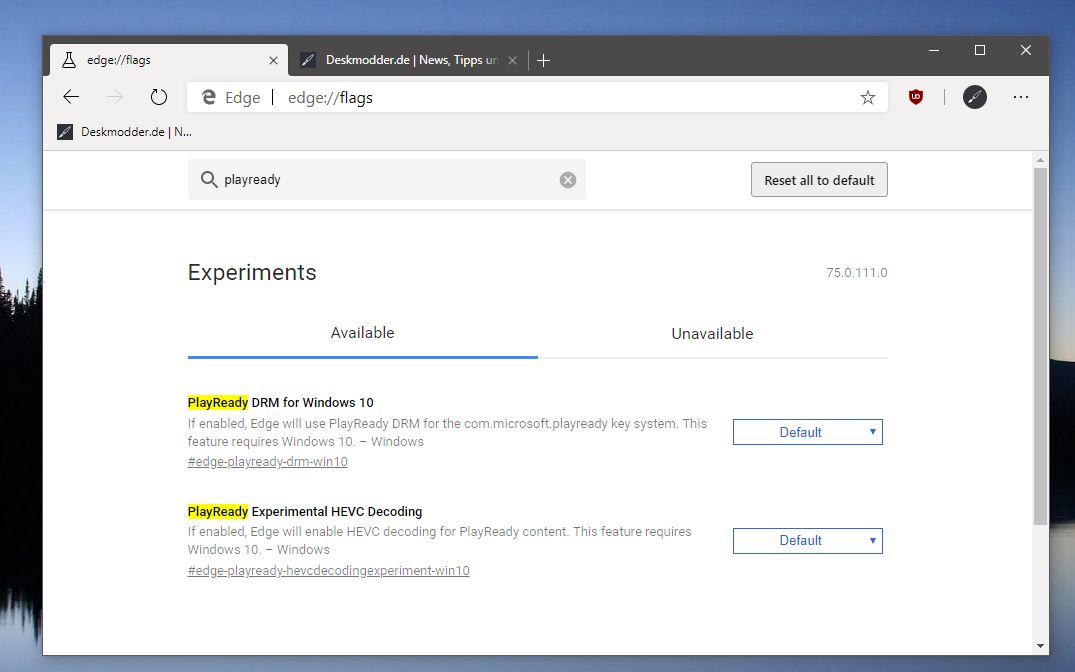Windows 10 Edge Chromium
Summary
Microsoft Chromium Edge for Windows 10 has been released, and here is everything you need to know about how you can download and install the browser right now. Microsoft Chromium Edge is an. (1) Is my Microsoft Edge the Chromium-based version? (2) 'About Microsoft Edge', in the link provided to this screen edge://settings/help, shows that the latest version is. Version 83.0.478.54 (Official build) (64-bit). This is different to mine but when I go to my Settings Windows Update, it shows I'm up-to-date. Updates, 10:04 a.m, 10:40 a.m. And 11 a.m.: Adds details about Microsoft testing Edge with consumers, Windows 7 support, Mac Touch Bar support and a language problem. Microsoft Surface Laptop 3. A good example of the touch improvements is the time input; currently, Chromium provides a text input, a clear button and a spinner. Our research found that with the large surface area of the fingertip, small controls that are too close together can be difficult to target precisely, recommending a control size of 23×23 pixels (13×13 DLUs) is a good minimum interactive control size for any.
Microsoft has released a new Chromium-based version of Microsoft Edge. This new version provides best in class compatibility with extensions and websites. Additionally, this new version provides great support for the latest rendering capabilities, modern web applications, and powerful developer tools across all supported OS platforms.
To learn more about the new Microsoft Edge, see the following resources:
Improvements and fixes
This update includes the following quality improvements:
Start menu pins, tiles, and shortcuts for the current version of Microsoft Edge will migrate to the new Microsoft Edge.
Taskbar pins and shortcuts for the current version of Microsoft Edge will migrate to the new Microsoft Edge.
The new Microsoft Edge will be pinned to the taskbar. If the current version of Microsoft Edge is already pinned, it will be replaced.
The new Microsoft Edge will add a shortcut to the desktop. If the current version of Microsoft Edge already has a shortcut, it will be replaced.
By default, most protocols that Microsoft Edge handles will be migrated to the new Microsoft Edge.
The current version of Microsoft Edge will be hidden from UX surfaces in the OS. This includes settings, applications, and any file or protocol support dialog boxes.
Attempts to start the current version of Microsoft Edge will redirect to the new Microsoft Edge.
The First Run Experience (FRE) will auto-launch the first time that a device restarts after the new Microsoft Edge is installed.
Data from earlier versions of Microsoft Edge (such as passwords, favorites, open tabs) will be available in the new Microsoft Edge.
This new Microsoft Edge does not support uninstalling of this update.
To view supported features, please see the Microsoft Edge Platform Status.
Known issues in this update
We are currently not aware of any issues with this update.
How to get this update

Manual download
If you want to download the new Microsoft Edge, go to https://www.microsoft.com/edge.
Prerequisites
For Windows 10, version 1909:
No additional updates are required.
For Windows 10, version 1903:
You must have one of the following updates or a later update installed to apply this update:
Recommended: October 8, 2019—KB4517389 (OS Build 18362.418)
Optional: September 26, 2019—KB4517211 (OS Build 18362.387)
File information
File attributes
The English (United States) version of this software update installs files that have the attributes that are listed in the following tables.
File verification

File hash information
File name | SHA1 hash | SHA256 hash |
|---|---|---|
Windows10.0-KB4541302-x86.msu | F4C0F8BFB1CDB9031C68AD92EF4550EB29BC4EB0 | ED7205807F35B020D6A02419FC586C7666CF0848FEA187D12EE029F1B558A5CC |
Windows10.0-KB4541302-x64.msu | 5AB99737C6E98AF331B2F27C749BCD464E50D0DC | 74F8AA021627A1B961E6C19985A8D1004149AF3171DEE720BB4ECD3B354A524D |
For all supported x86-based versions
File name | File version | File size | Date | Time |
Microsoftedgestandaloneinstaller.exe | 1.3.119.43 | 74,428,112 | 14-Feb-2020 | 02:54 |
For all supported x64-based versions
File name | File version | File size | Date | Time |
Microsoftedgestandaloneinstaller.exe | 1.3.119.43 | 76,864,208 | 14-Feb-2020 | 02:54 |
References
Learn about the terminology that Microsoft uses to describe software updates.
-->An extension is a small program that you (a developer) use to add or modify features for Microsoft Edge (Chromium). An extension is intended to improve a user's day-to-day browsing experience. It provides niche functionality that is important to a target audience.
You may create an extension if you have an idea or product that is based upon either of the following conditions.
- A specific web browser.
- Improvements to features of specific webpages.
Examples of companion experiences include ad blockers and password managers.
An extension is structured similar to a regular web app. At a minimum, it should include the following features.
- An app manifest JSON file that contains basic platform information.
- A JavaScript file that define functionality.
- HTML and CSS files that define the user interface.
To work directly with part of the browser, such as a window or tab, you must send API requests and often reference the browser by name.
Basic guidance
Some of the most popular browsers to build extensions for include Safari, Firefox, Chrome, Opera, Brave, and Microsoft Edge. Great places to begin your extension development tutorials and documentation research are sites hosted by the browser organizations. The following table isn't definitive, and may be used as a starting point.
| Web browser | Chromium-based? | Extension development webpage |
|---|---|---|
| Safari | No | developer.apple.com/documentation/safariservices/safari_app_extensions |
| Firefox | No | developer.mozilla.org/docs/Mozilla/Add-ons/WebExtensions |
| Chrome | Yes | developer.chrome.com/extensions |
| Opera | Yes | dev.opera.com/extensions |
| Brave | Yes | Uses Chrome Web Store |
| new Microsoft Edge | Yes | developer.microsoft.com/microsoft-edge/extensions |
Important
Many of the tutorials of the sites use browser-specific APIs that may not match the browser for which you develop. In most cases, a Chromium extension works as-is in different Chromium browsers and the APIs work as expected. Only some less common APIs may be strictly browser-specific. For links to the tutorials, navigate to See also.
Why Chromium?
If your goal is to publish your extension in the extensions store for each browser, it must be modified for each version to target and run in each distinct browser environment. For example, Safari extensions may use both web and native code to communicate with counterpart native applications. The last four browsers in the previous table use the same code package, and minimizes the requirement to maintain parallel versions. These browsers are based on the Chromium open-source project.
Create a Chromium extension to write the least amount of code. It also targets the maximum number of extension stores and ultimately the maximum number of users who find and acquire your extension.
The following content focuses mostly on Chromium extensions.
Browser compatibility and extension testing
Occasionally, API parity doesn't exist between Chromium browsers. For example, there are differences in the identity and payment APIs. To ensure your extension meets customer expectations, review API status through the following official browser docs.
The APIs you require define the changes you must make to address the differences between each browser. It may mean that you must create slightly different code packages with small differences for each store.
To test your extension in different environments before you submit it to a browser store, sideload it into your browser while you develop it.
Publish your extension to browser stores
You may submit and seek browser extensions in the following browser stores.
Some stores allow you to download listed extensions from other browsers. However, cross-browser access is not guaranteed by browser stores. To ensure your users find your extension in different browsers, you should maintain a listing on each browser extension store.
Users may need to install your extension in different browsers. In this scenario, you may migrate existing Chromium extensions from one browser to another.
Migrate an existing extension to Microsoft Edge
If you've already developed an extension for another Chromium browser, you may submit it to the Microsoft Edge Add-ons store. You don't need to rewrite your extension, and must verify it works in Microsoft Edge. When you migrate an existing Chromium extension to other Chromium browsers, ensure the same APIs or alternatives are available for your target browser.
For more information on porting your Chrome extension to Microsoft Edge, navigate to Port Chrome extensions to Microsoft Edge (Chromium). After you port your extension to the target browser, the next step is to publish it.
Publish to the Microsoft Edge add-ons website
To start publishing your extension to Microsoft Edge, you must register for a developer account with an MSA email account to submit your extension listing to the store. An MSA email account includes @outlook.com, @live.com, and so on. When you choose an email address to register, consider if you must transfer or share ownership of the extension with others in your organization. After registration is complete, you may create a new extension submission to the store.
To submit your extension to the store, ensure you provide the following items.
- An archive (
.zip) file that contains your code files. - All required visual assets, which include a logo and small promotional tile.
- Optional promotional media, such as screenshots, promotional tiles, and a video URL.
- Information that describes your extension such as the name, short description, and a privacy policy link.
Chromium Edge Browser
Note
Different stores may have different submission requirements. The above list summarizes the requirements to publish an extension for Microsoft Edge.
Windows 10 Edge Chromium Release Date
After you've successfully submitted your extension, your extension undergoes a review process and either passes or fails the certification process. Owners are notified of the outcome and given next steps as required. If you submit an extension update to the store, a new review process is started.
Windows 10 Edge Chromium Enterprise
See also
